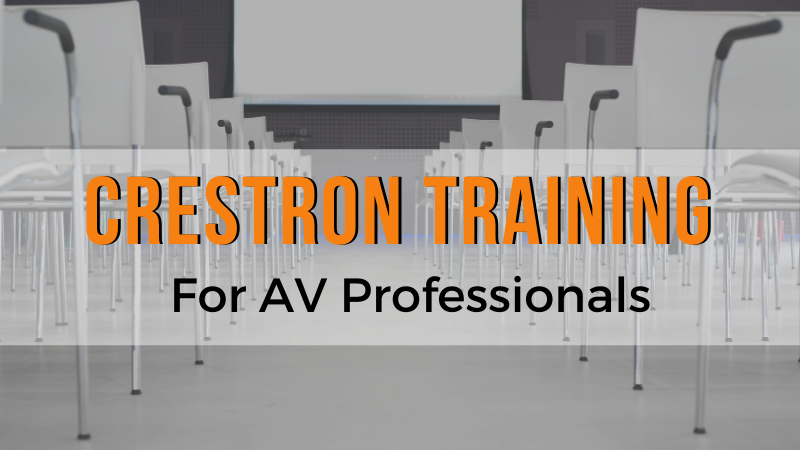The World is Changing, the AV Industry is Changing too
There has been a trend in the AV Industry of moving from a hardware to a software based business. This trend has never been more important than right now, as a global pandemic has forced government leaders to take unprecedented and decisive actions. Businesses are being placed into uncomfortably cut and dry categories of “essential” vs “nonessential”. The inevitable result is many people are being furloughed, laid off indefinitely, or out right terminated.
However, in every gray cloud exists a silver lining: this situation has caused the AV industry to enjoy a moment in the sun.
The Software Based Solutions
Business leaders across the board are moving operations from their offices to their living rooms, and are connecting with employees and customers over zoom, WebEX, and other software based Videoconferencing applications. The migration may be clunky, but it highlights the importance of A/V and collaboration services. It also presents a few questions:
- What will happen when things get back to “normal” ?
- Are people really going to be in any hurry to get back into commuter traffic, or crowded subways to go and high five team members at the office (without hand sanitizer)?
- Will we go back to exactly as we were OR remain largely virtual-remote?
Somewhere in the middle seems a very likely scenario...
In a recent article with Sound & Communications, David Danto, Director of UC Strategy with Poly made the astute comment:
“With no other option but to remotely collaborate using the tools we’ve been advocating for years, people have discovered to their shock that they are actually easy to use and reliable.”
This is not to say that integrators are going to stop designing and building collaborative meeting spaces for their corporate clients. On the contrary, these services will likely be in higher demand than ever! However, a more simple, streamlined solution may be what’s in demand for smaller team gatherings.
A typical conference room includes a control processor, audio processor, video cameras, video distribution, LFD screen, and an end-user control point (touch screen or keypad) along with loudspeakers and amplifiers. A big part of what integrators offer is install, programming, troubleshooting and testing all of this audio, video and control hardware to make sure all pieces are communicating the way they should. According to Commercial Integrator,
“Each hardware piece is dedicated to a specific task and as such, needs to be managed individually and requires specific programming in order to integrate with the rest of the room...This not only presents a ton of work, but also a mess to manage, particularly when changes are requested.”
QSC and the Q-SYS Ecosystem offers a modern solution
Enter QSC, and their Q-SYS Ecosystem: “a software-based platform built around an open IT-friendly ecosystem. Q-SYS offers fully integrated audio, video and control on a singular platform…” rather than a mess of divergent hardware pieces associated with these different functions.
As a recruiter for the AV Industry, I can say that even before this global event took place hiring managers at AV Integrators were talking about clients woes for a simpler AV System (they were also on the hunt for Engineers versed in programming and integrating Q-SYS products). In a clever advertising video by QSC, an “integrated software platform” is explained to a confused and befuddled IT professional:
“Your phone is an integrated software platform: you don’t carry a calculator, video game console, and gps in your pocket...right!? You just download those features onto your phone...same with Q-SYS”
This is possible because Q-SYS leverages Intel processing and a Linux operating system, creating a simple and flexible audio, video, and control (AV&C) solution built on IT standards. Of course you cannot get rid of all the endpoints: cameras, speakers, touch screens, etc. These pieces may come from a variety of manufacturers.
However, the Q-SYS ecosystem has another unique ability: it accepts custom scripting from other programming languages; that way third-party hardware can still be controlled with Q-SYS, with the use of plug-ins built by integrators. This functionality differentiates Q-SYS as a plug and play solution for building upon existing conference room gear.
Not to mention all of this hardware is offered by the company as well.
What will the future hold for the AV Industry?
Now to the big question…
Will discussions of expanding business operations in a physical sense ever take place again? Or will we remain trapped at home; only to communicate virtually through small screens, for the rest of our days?
That is probably a stretch.
We may look to simplify, and our work-life balance may be more of a blend of virtual and onsite. What is clear however, is that AV/IT and VTC solutions are the technologies that will usher in this new normal. Our technology needs will likely scale up accordingly. Product suites like Q-SYS, which have the flexibility to easily deliver new features to the platform with a simple software upgrade, will be increasingly important and continue the shift away from purpose-built hardware.









